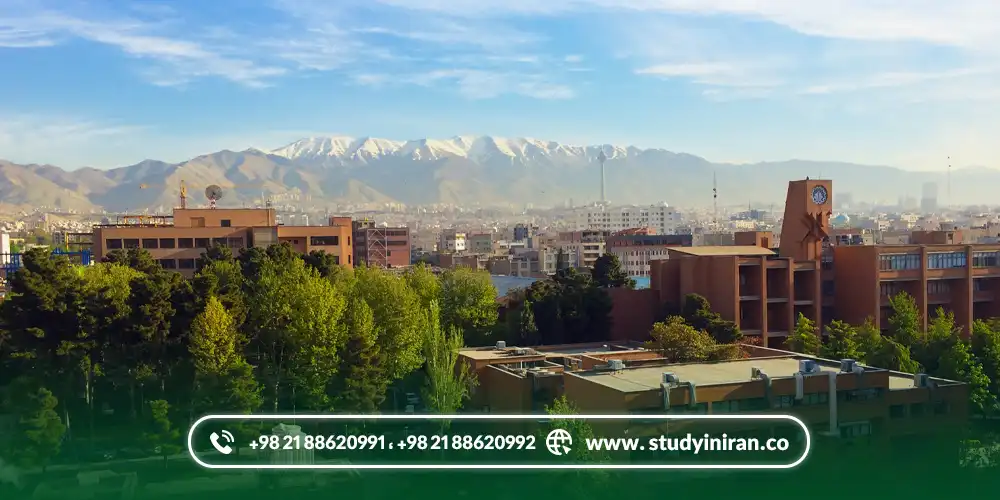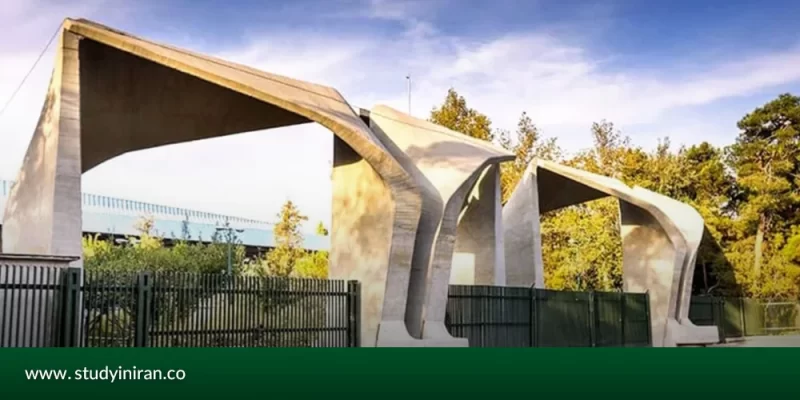- Study Opportunities in Iran
- Types of Scholarships in Iran
- Leading International Universities in Iran
- Admission Requirements for International Students in Iran
- Persian Language and Studying in Iran
- Tuition Fees for International Students in Iran
- Admission Requirements for International Students at Islamic Azad University
- Program Restrictions and Academic Requirements for International Students
- Final Thoughts
- Frequently Asked Questions (FAQs)
Iran, long celebrated for its heritage in science, culture, and literature, is now gaining recognition as a rising destination for higher education in West Asia. With internationally focused universities, diverse scholarship programs, a vibrant academic atmosphere, and the warmth of Iranian hospitality, the country is becoming an appealing choice for students from abroad.
Today, more than 35,000 international students are enrolled across International Universities in Iran, like Iran’s public universities, Islamic Azad University, medical universities under the Ministry of Health, and private higher education institutions. Programs range from medicine and engineering to humanities and the arts, offered primarily in Persian and, in some cases, in English—broadening Iran’s reach to students not only from the region but also from further afield.
Affordable tuition, strong academic resources, and scholarship opportunities are helping Iran establish itself as a competitive and accessible hub for higher education in the region.
Study Opportunities in Iran

International students in Iran generally choose between two main pathways: fully funded scholarships or self-funded programs.
1. Scholarship Programs
Students awarded scholarships can study tuition-free across a variety of fields. Beyond waived tuition, they often receive free accommodation, health insurance, and a monthly allowance. Scholarships are offered through Iranian universities, embassies, cultural centers, and international partnerships, reflecting the country’s drive to attract talented students and build stronger global academic ties.
2. Self-Funded Programs
For those who prefer or do not qualify for scholarships, self-funded programs provide an affordable alternative. Tuition costs are lower than in many other countries, while students still benefit from access to dormitories, healthcare, and cultural experiences. This balance of affordability and quality makes Iran an accessible and rewarding destination for higher education.
Types of Scholarships in Iran
Scholarships in Iran are generally categorized into three levels, based on the scope of financial support and benefits provided:
Type A
This is the most comprehensive scholarship package. It covers full tuition, free accommodation, a living allowance, and health insurance. Students awarded this type can focus entirely on their studies and academic growth without financial concerns.
Type B
Type B scholarships waive tuition fees and provide free housing, but do not include a living stipend. This option is well-suited for students who have financial support from their families but still want to ease part of the burden of studying abroad.
Type C
This type covers tuition fees only. Students are responsible for other expenses such as housing, insurance, and personal costs. It remains a valuable opportunity for hardworking students who want to reduce their educational expenses while gaining access to Iran’s universities.
The availability of these different options ensures that students with diverse financial backgrounds and needs can find a path to study in Iran.
Leading International Universities in Iran

Iran is home to a wide range of universities that welcome international students. Below are some of the most recognized institutions offering diverse academic programs and research opportunities:
- University of Tabriz – One of the oldest academic centers in northwestern Iran, known for its strengths in basic sciences and engineering, and a popular destination for international students.
- Tarbiat Modares University – A graduate-only institution in Tehran, regarded as a hub for advanced research across multiple disciplines.
- Shahid Beheshti University – Based in Tehran, highly regarded for law, political science, and humanities, while also offering programs in engineering and medicine.
- Isfahan University of Technology – A major university in Isfahan with a focus on engineering and agriculture, featuring an expansive campus with strong research facilities.
- Amirkabir University of Technology (Tehran Polytechnic) – One of Iran’s top engineering universities, well-known for its cutting-edge research and innovation.
- Khajeh Nasir al-Din Tusi University of Technology – A leading technical university in Tehran with highly ranked programs in electrical, mechanical, aerospace, and computer engineering.
- Sharif University of Technology – Widely considered the most prestigious engineering university in Iran, with global recognition and graduates employed in top international institutions.
- Allameh Tabataba’i University – The largest humanities university in Iran, offering programs in economics, psychology, linguistics, communication, and related fields.
- Iran University of Science and Technology – A pioneer in engineering, technology, and architecture, and one of the oldest technical institutions in Tehran.
- Urmia University – A key institution in northwestern Iran with strengths in agriculture, veterinary sciences, and natural sciences.
- Bu-Ali Sina University – Located in Hamedan and named after the Persian philosopher Avicenna, offering a wide range of programs in engineering and the humanities.
- Birjand University – A reputable university in eastern Iran, with strong programs in basic sciences, agriculture, and engineering.
- Kharazmi University – The oldest higher education institution in Iran, now offering a broad spectrum of programs in both humanities and engineering.
- Razi University (Kermanshah) – Known for its programs in agriculture, basic sciences, and veterinary medicine.
- Zanjan University – A respected university in northwestern Iran with active programs in agriculture, humanities, and technical fields.
- University of Sistan and Baluchestan – The largest university in southeastern Iran, offering a wide variety of programs at all levels.
- Shahid Chamran University of Ahvaz – A historic institution in southern Iran, especially active in agriculture, sciences, and engineering.
- University of Kashan – A central Iranian university with strong programs in engineering, chemistry, and the humanities.
- University of Mazandaran – The largest public university in northern Iran, offering a broad array of disciplines.
- Yazd University – Located in central Iran, with programs in engineering, humanities, and the arts.
- Sahand University of Technology (Tabriz) – A well-regarded institution specializing in engineering and technology.
- Babol Noshirvani University of Technology – One of Iran’s top-ranked technical universities, frequently listed in international rankings.
- Shahrood University of Technology – Situated in northeastern Iran, with leading programs in mining, civil engineering, and information technology.
Other universities—including Shiraz University, University of Art, Imam Khomeini International University (Qazvin), University of Kurdistan, Persian Gulf University (Bushehr), and Shahid Madani University of Azerbaijan—are also active in admitting international students and offer a wide range of academic opportunities.
Admission Requirements for International Students in Iran
To enroll at Iranian universities and obtain a student visa, international applicants must meet both general and program-specific requirements.
General Requirements
- No legal restrictions preventing the applicant from studying in Iran.
- Approval of eligibility by the official representatives of the Islamic Republic of Iran (embassy or cultural mission).
- Submission of a valid medical certificate confirming physical and mental health.
Academic Requirements
- Possession of valid academic credentials from the previous level of study.
- A qualifying grade point average (GPA) that meets the standards of the admitting university.
- An official admission letter from the Iranian university in the chosen field of study.
- Compliance with age limits for each degree level (undergraduate, master’s, PhD). Students who have completed their previous degree(s) in Iran are exempt from age restrictions.

Persian Language and Studying in Iran
Because Persian is the main language of instruction at Iranian universities, international students are expected to have at least some proficiency in it. To help, specialized institutes—such as the International Center for Persian Language Studies—offer programs that cover not just the language itself but also literature, culture, and the arts.
These courses are designed to be more than language training. They give students a window into Iran’s history and cultural life, making the experience of studying in the country broader and more rewarding than classroom learning alone.
Tuition Fees for International Students in Iran
Tuition for international students in Iran is charged in euros and does not cover accommodation, meals, or insurance. Universities also reserve the right to adjust fees without prior notice.
1. Non-Resident International Students
For students from abroad (except Afghan nationals or those with Iranian residency), tuition fees are generally as follows:
- Persian Language & Literature, Humanities, Social Sciences, Behavioral Sciences: €850 – €1,150 per semester
- Other fields: €1,150 – €1,700 per semester
- Arts, Engineering, Basic Sciences, Agriculture, Veterinary Medicine: €1,500 – €2,150 per semester
Note: Families with more than one member enrolled simultaneously may be eligible for tuition discounts.
2. Afghan Nationals and International Students with Iranian Residency
These students pay reduced tuition rates:
Humanities, Social Sciences, Behavioral Sciences
- Bachelor’s: €465 per semester
- Master’s & Professional Doctorate (DVM): €465 per semester
- PhD: €650 per semester
Arts, Engineering, Basic Sciences, Agriculture, Veterinary Medicine
- Bachelor’s: €600 per semester
- Master’s & Professional Doctorate (DVM): €600 per semester
- PhD: €800 per semester
This structure highlights a key advantage for Afghan students and those holding Iranian residency, who benefit from significantly lower tuition costs compared to other international applicants.

Admission Requirements for International Students at Islamic Azad University
Foreign students residing in the Islamic Republic of Iran who wish to take part in the entrance examination of Islamic Azad University must meet the general admission criteria, as well as the following identity and residency requirements:
Identity and Residency Documentation
Applicants must hold one of the following valid documents:
- A political asylum certificate issued by the Law Enforcement Force of the Islamic Republic of Iran
- A valid passport with at least six months’ validity remaining
- A special identity card for foreign nationals issued by the Bureau for Aliens and Foreign Immigrants Affairs (Ministry of Interior)
- An exit permit issued by the Bureau for Aliens and Foreign Immigrants Affairs
Program Restrictions and Academic Requirements for International Students
Program Restrictions
International students may not apply to programs that require post-graduation employment commitments or government service in Iran.
Eligibility for Entrance Exams
Only students who have graduated from officially recognized schools inside Iran are eligible to sit for the Islamic Azad University entrance exam.
Minimum GPA Requirements for Medical Sciences
- Associate degree: minimum GPA 15/20
- Bachelor’s, Master’s, and PhD: minimum GPA 16/20
Final Thoughts
With a strong academic tradition, distinguished faculty, and diverse learning opportunities, Iran’s international universities have become an important destination for students across the region. Affordable tuition, a wide range of disciplines, and scholarship options make Iran a serious choice for those pursuing studies in humanities, engineering, medicine, and the arts.
Beyond academics, studying in Iran offers the unique experience of living in a country with a rich culture and thousands of years of history—an opportunity to learn Persian and engage with Iranian society firsthand.
For international students planning to begin their academic journey in Iran, Study in Iran serves as a trusted resource, providing guidance on choosing the right university, navigating admission requirements, and accessing scholarship opportunities. With careful planning and the right support, studying in Iran can be the starting point for a bright future and global success.
Frequently Asked Questions (FAQs)
Yes. Many universities in Iran—such as the University of Tehran, Sharif University of Technology, Amirkabir University of Technology, and Tehran University of Medical Sciences—are listed in global rankings, and their degrees are recognized in numerous countries. Programs in engineering, medicine, and basic sciences, in particular, enjoy strong international credibility.
The primary language of instruction is Persian. However, some universities, including Sharif University of Technology and the University of Tehran, offer graduate-level programs in English. For international students, accredited centers also provide intensive Persian language courses to support their studies.
Tuition fees for international students vary by program and degree level, typically ranging between €850 and €2,150 per semester. Afghan nationals and students with Iranian residency are eligible for reduced tuition rates.
Major destinations for international students include the University of Tehran, Ferdowsi University of Mashhad, Shiraz University, University of Gilan, and Alzahra University (for women). Technical universities such as Sharif University of Technology, Amirkabir University of Technology, and Babol Noshirvani University of Technology are also highly popular.
Yes. Iran offers three main types of scholarships:
Type A: Full tuition waiver, free housing, living allowance, and health insurance
Type B: Full tuition waiver and free housing (no living allowance)
Type C: Tuition waiver only (other expenses covered by the student)
Applicants must hold valid academic credentials, meet minimum GPA requirements, provide a health certificate, and have legal residency status. Admission to certain competitive programs—such as medicine—requires higher GPAs (generally 15–16 out of 20 or above).





